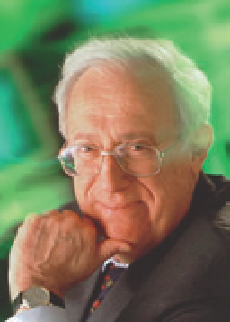Information Technology Reference
In-Depth Information
broken links had to be tolerated if the World Wide Web was to scale up and be
truly global and dynamic.
The web browser developed by Berners-Lee was specific to the rather
uncommon NeXT workstations, and also required new windows to be opened as
the user surfed from site to site. Marc Andreessen and Eric Bina at NCSA wanted
to give users a much simpler experience and have pictures and text displayed in
a single screen as a “mosaic” - that is, an assembly of small pieces of informa-
tion. Their Mosaic browser was launched in April 1993 and tens of thousands
of copies were downloaded from NCSA within the first few weeks (
Fig. 11.12
).
Importantly, NCSA also developed versions of Mosaic for Windows and the PC so
that their browser would reach the largest possible audience. From one hundred
hits per day in the summer of 1991, by the summer of 1993 the CERN web server
was receiving ten thousand hits per day (
Fig. 11.13
). The exponential growth of
the web was now under way in earnest: from about fifty websites at the end of
1992, there were more than ten thousand sites by the end of 1994. The Mosaic
browser was an important factor in fueling this growth. Another was CERN's
declaration, at the end of April 1993, “that CERN agreed to allow anybody to
use the Web protocol and code free of charge, to create a server or browser, to
give it away or sell it, without royalty or any other constraint.”
15
This declaration
was reassuring to industry and paved the way for the development of web-based
e-commerce
, business conducted over the Internet.
After graduating from the University of Illinois, Andreessen moved to
Silicon Valley, California's center of high-technology industries, in December
1993. He was keen to find some way to commercialize his work on the Mosaic
web browser. With Jim Clark, one of the original founders of the computer
manufacturer Silicon Graphics, Inc., Andreessen established the Mosaic
Communications Corporation (later Netscape Communications Corporation)
(
B.11.7
). Their first move was to hire the core Mosaic development team from
NCSA, and their first browser, Netscape Navigator, was released in December
1994 (
Fig. 11.14
). Their browser worked with Unix, Windows, and Macintosh
systems and was released as a download over the Internet. By making the
software free for noncommercial use, Netscape Navigator rapidly became the
default browser
for the web, the browser that launched automatically unless the
user changed it.
Fig. 11.10. The first U.S. website was set
up at SLAC in 1991. Other physics labo-
ratories around the world soon followed
their example. These early web servers
enabled the physics community to share
documents and results of experiments.
Fig. 11.11. A picture of the CERN ama-
teur singing group
Les Horribles Cernettes
was uploaded to the web by their fan
Tim Berners-Lee on 18 July 1992, to test
an early version of his software. It is
believed to be the first photo posted to
the web.
The dot-com bubble and the browser wars
To understand the rise of e-commerce, it is necessary to understand some-
thing about encryption. The science of cryptography dates back to ancient
times and consists of techniques for
encoding
the information in a message so
that it can only be
decoded
by its intended recipient. We discuss the state of the
art in cryptography in more detail in
Chapter 12
- here we will assume that
reliable and computationally manageable encryption methods exist.
Netscape set the stage for the emergence of e-commerce by providing a
new security facility called the
secure sockets layer
(SSL). This offered businesses
the option of using an
encrypted
(coded), secure channel for users to send their
credit card information over the Internet. The SSL makes the whole business of
encryption invisible to the user. By 1994, with Netscape's browser offering SSL
B.11.6. Michael Dertouzos (1936-2001)
was director of the Laboratory of
Computer Science at MIT. He played
a crucial role in working with Tim
Berners-Lee in establishing the World
Wide Web Consortium (W3C) which
oversees the development of web
standards. In his topic
The Unfinished
Revolution
he outlined his vision for
“human centric computers.”



Search WWH ::

Custom Search